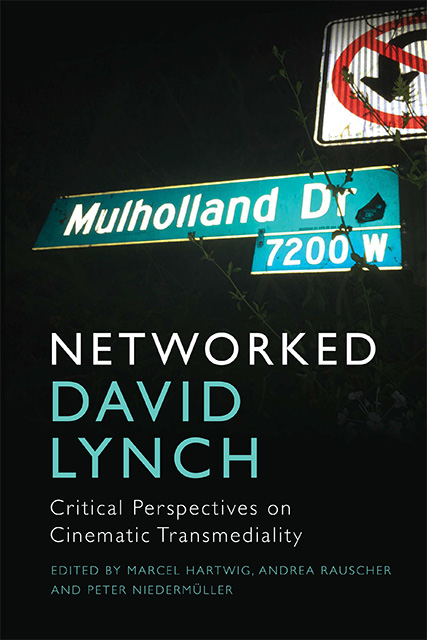Book contents
- Frontmatter
- Contents
- List of Figures
- Notes on Contributors
- Introduction: Entering Lynchtown
- Part I Approaching Intertexts
- Part II Twin Peaks as Transmedia Network
- Part III David Lynch's Transmedia Aesthetics
- Part IV Videographic Criticism of David Lynch’s Cinematic Work
- Conclusion: Leaving Lynchtown
- Index
Conclusion: Leaving Lynchtown
Published online by Cambridge University Press: 19 October 2023
- Frontmatter
- Contents
- List of Figures
- Notes on Contributors
- Introduction: Entering Lynchtown
- Part I Approaching Intertexts
- Part II Twin Peaks as Transmedia Network
- Part III David Lynch's Transmedia Aesthetics
- Part IV Videographic Criticism of David Lynch’s Cinematic Work
- Conclusion: Leaving Lynchtown
- Index
Summary
The various contributions in Networked David Lynch illustrate a more open structure to Lynch's body of work and debunk notions about a ‘Gesamtkunstwerk’ as something imaginary rather than something graspable by way of transmediality. While TV and media scholars such as Henry Jenkins and Jason Mittell (2015) argue for the importance of world building, modes of reception, and coherence (Jenkins 2020) in transmedia storytelling, the individual chapters of this book have repeatedly shown that Lynch's art world aims at association rather than continuity and comprehension. For example, the Georgia Coffee commercials (see Chapter 4) evoke characters and aspects of Twin Peaks, but do not expand the storyworld of the series. Rather, the characters and the plot points work here as free-floating signifiers that allow for recognition rather than continuation. In this manner, individual elements from ‘Lynchtown’ allow for semiotic units that relate to or recall Lynch's ‘Gesamtkunstwerk’ but do not explicitly add to their narratives. Lynch's network allows for separate and distinct working units that branch out of his oeuvre horizontally and are only rooted in the source of its composer/director. These units do not need a bigger structure or whole to be understood and processed. As a consequence, the networked Lynch follows the logic of a leitmotif: the whole composition can be taken apart for recall and recognition but is in itself open-ended and allows for infinite variation. In comparison to Richard Wagner's ‘Gesamtkunstwerk’ one should also bear in mind that in the 1860s, Wagner preferred concert performances of torso-like fragments from Der Ring des Nibelungen to full staged performances, which did not meet his standards of the “Festspiel” (festival) idea (Voss 1997: 551–2). As such, different aesthetic units can be traced back to their root, such as recurring metaphors for electricity (Chapter 3), haunted cityscapes (Chapter 9), or archetypes (Chapter 10), but they allow for meaningful compositions or units of their own that sprawl, sustain themselves, and yet are interconnected with each other.
A majority of the contributions collected in this anthology point to the significance of Twin Peaks: The Return in Lynch's network. The arrival of The Return initiated discussions about whether the series could be considered through the lens of a film or if it would be better understood as a work of television.
- Type
- Chapter
- Information
- Networked David LynchCritical Perspectives on Cinematic Transmediality, pp. 256 - 260Publisher: Edinburgh University PressPrint publication year: 2023



